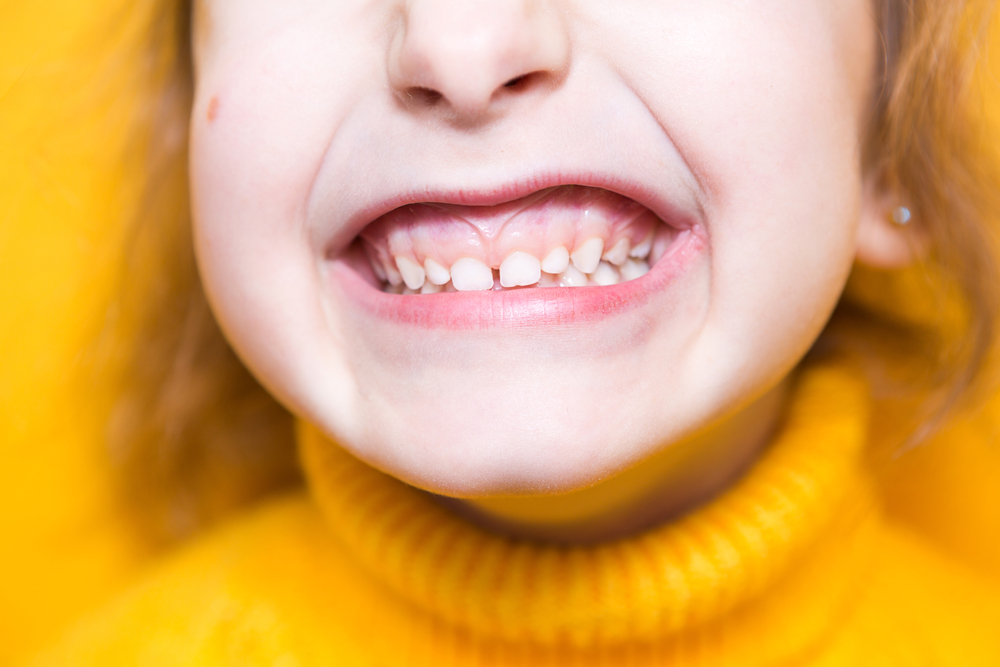
5 Ways To Improve Gum Health
Parents strive to provide the best care for their children, ensuring their well-being in every aspect of life. When it comes to their health, dental care plays a crucial role in maintaining not only a bright and beautiful smile but also overall wellness. One essential aspect of dental health that often goes unnoticed is gum health. Healthy gums are the foundation of a strong and vibrant smile, and they contribute to the overall health of our mouths.
In this article, we will explore five effective ways to improve gum health and explain why it matters for your family’s dental needs.
Brushing Techniques for Healthy Gums
Proper brushing techniques are fundamental for maintaining healthy gums. Teaching your child the right way to brush not only promotes gum health but also establishes good oral hygiene habits that will benefit them throughout their lives.
Let’s explore some effective brushing techniques.
Choosing the right toothbrush and toothpaste
When it comes to toothbrushes, opt for a soft-bristled brush with a small head that can easily reach all areas of the mouth. Pair it with fluoride toothpaste that is age-appropriate for your child.
Brushing gently and thoroughly, focusing on the gum line
Encourage your child to brush gently in circular motions, paying special attention to the gumline where plaque tends to accumulate. This helps remove plaque and food particles that can lead to gum disease. Remember, vigorous brushing can harm the gums, so remind your child to brush with a gentle touch.
Time dedication and frequency of brushing
Ensure that your child brushes their teeth for a full two minutes, twice a day. Set a timer or use a toothbrush with a built-in timer to help them track the duration. It’s also important to emphasize the importance of consistency, making brushing a daily routine that becomes second nature. By following these brushing techniques, you can promote gum health and prevent gum disease in your child. Remember to lead by example and brush your teeth alongside them, making it a fun and interactive activity. Creating a positive association with oral care will encourage your child to maintain good brushing habits throughout their life.
The Power of Flossing
While brushing is essential, it’s important to recognize that toothbrushes can’t reach all the nooks and crannies between teeth. This is where flossing comes in. Flossing is a powerful tool for maintaining healthy gums by removing plaque and food particles that brushing alone might miss.
Let’s explore the benefits and techniques of proper flossing.
The Role of Flossing in gum health
Flossing helps prevent gum disease by removing plaque buildup from between the teeth and along the gumline. When plaque is not effectively removed, it can harden into tartar, leading to gum inflammation and potential gum disease. Regular flossing can keep your child’s gums healthy and reduce the risk of oral health issues.
Benefits of flossing
Emphasize the advantages of flossing, such as preventing cavities, reducing bad breath, and promoting gum health. By removing plaque and debris from between the teeth, flossing helps maintain a clean and healthy oral environment.
Using the correct flossing technique
Guide your child on the proper flossing technique. Start by using a piece of floss around 18 inches long. Encourage them to wrap the floss around their middle fingers, leaving a small section to work with. Gently guide the floss between each tooth, curving it around the tooth in a C shape. Slide the floss up and down, ensuring it reaches below the gumline. Repeat this process for each tooth, using a clean section of floss each time.
Flossing frequency and consistency
Encourage your child to floss at least once a day, preferably before bedtime, to remove any food particles and plaque that may have accumulated throughout the day. Consistency is key, so make flossing a daily habit to maintain optimal gum health. To make flossing more enjoyable for kids, consider using colourful floss picks or floss holders designed for children. You can also introduce kid-friendly flavours of floss to make the experience more pleasant. With practice and encouragement, flossing will become an essential part of their oral hygiene routine.
Nourishing Foods for Healthy Gums
While brushing is essential, it’s important to recognize that toothbrushes can’t reach all the nooks and crannies between teeth. Maintaining a well-balanced diet not only supports overall health but also significantly promotes gum health. The nutrients we consume impact the strength and resilience of our gums. Let’s explore some nourishing foods that can contribute to healthy gums.
Fruits and vegetables
Encourage your child to consume a variety of fruits and vegetables, as they are rich in essential vitamins and minerals. Vitamin C, in particular, is crucial for gum health as it helps prevent gum disease and supports tissue repair. Include citrus fruits, strawberries, kiwis, bell peppers, broccoli, and leafy greens in their diet.
Dairy products
Calcium and vitamin D are essential for maintaining strong teeth and gums. Incorporate dairy products such as milk, cheese, and yogurt into your child’s diet. If your child has dietary restrictions or is lactose intolerant, explore alternative sources of calcium and vitamin D, such as fortified plant-based milk and leafy green vegetables.
Water
Staying hydrated is vital for overall health, including gum health. Water helps rinse away food particles and stimulates saliva production, which helps protect the gums and teeth. Encourage your child to drink water throughout the day instead of sugary beverages that can contribute to dental issues.
Nutrient-rich snacks
Replace sugary snacks with healthier alternatives. Offer your child snacks like crunchy fruits and vegetables, nuts, and seeds. These options not only provide essential nutrients but also stimulate saliva production and help remove plaque from teeth. By incorporating these gum-friendly foods into your child’s diet, you can support their overall oral health and contribute to stronger, healthier gums.
Regular Dental Checkups and Professional Cleanings
While proper oral hygiene practices at home are vital, regular dental checkups and professional cleanings play a crucial role in maintaining optimal gum health.
Let’s explore why these routine visits are essential and how they contribute to healthy gums.
Stress the significance of regular dental visits for gum health
Regular dental checkups allow for early detection and prevention of gum disease. During these visits, a dental professional will thoroughly examine your child’s teeth and gums, checking for any signs of inflammation, gum recession, or other oral health issues. Catching problems early enables prompt treatment, preventing them from progressing into more severe conditions.
Importance of professional cleanings in preventing gum disease
Even with diligent brushing and flossing, plaque can accumulate in hard-to-reach areas. Over time, this plaque hardens into tartar, which cannot be removed through regular brushing alone. Professional cleanings performed by dental hygienists effectively remove tartar, reducing the risk of gum disease and promoting healthy gums.
Benefits of early detection and Intervention
Regular dental visits allow for the early detection of any underlying dental issues that may affect gum health. By identifying problems such as tooth decay, misalignment, or bite issues early on, appropriate measures can be taken to address them, preventing potential gum complications. By making regular dental checkups a priority for your child, you are investing in their long-term oral health. These visits not only contribute to healthy gums but also foster a positive attitude towards dental care, instilling a lifetime of good oral hygiene habits.
Dental Hygiene Products for Optimal Gum Health:
In addition to regular dental checkups and professional cleanings, utilizing the right dental hygiene products can significantly contribute to optimal gum health.
Let’s explore the importance of selecting the appropriate tools for your child’s dental needs.
Mouthwash and dental rinses
Mouthwash can be a valuable addition to your child’s oral hygiene routine, especially if they are at an age where they can effectively rinse without swallowing. Look for antimicrobial mouthwashes that can help reduce bacteria in the mouth and prevent gum disease. Fluoride mouthwashes are also beneficial as they strengthen tooth enamel and protect against tooth decay.
Interdental brushes
Interdental brushes are small, narrow brushes designed to clean the spaces between teeth and along the gumline. They can be particularly useful for children who have braces or other orthodontic appliances. These brushes effectively remove plaque and debris from hard-to-reach areas, promoting gum health and preventing gum disease.
Tongue cleaners
While often overlooked, cleaning the tongue is essential for maintaining overall oral health. The tongue harbours bacteria that can contribute to bad breath and gum problems. Tongue cleaners are simple tools designed to remove bacteria and debris from the surface of the tongue. Encourage your child to incorporate tongue cleaning into their daily routine for fresher breath and improved gum health. By utilizing the right dental hygiene products, you empower your child to maintain good oral hygiene habits, effectively removing plaque and bacteria and promoting healthy gums.
If you liked this blog, check out this one on, “4 Signs of Teething in Newborns.”
